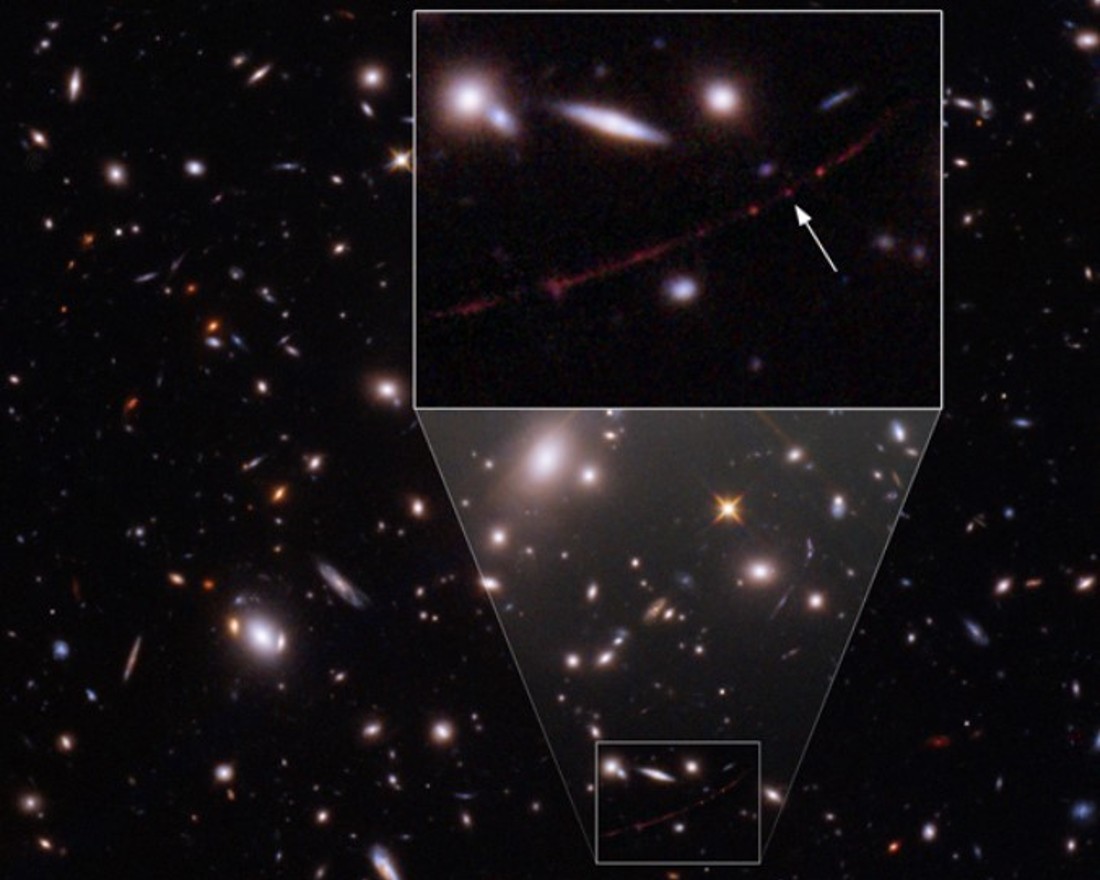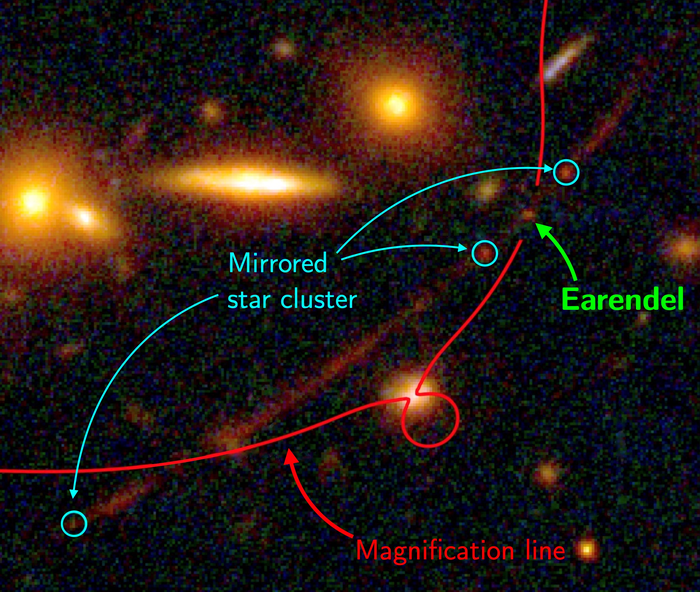
The Hubble Space Telescope's record of impressive celestial finds continues. On March 30, 2022, scientists announced that the powerful astronomical observatory had detected the light of a star located about 28 billion light-years away — making it the farthest individual star seen to date.
The ancient star is believed to have formed within a billion years after the universe's birth during the Big Bang. However, it is not the oldest star ever to be discovered. That honor belongs to a star dubbed Methuselah, which is believed to date back an astonishing 14.5 billion years, or about the same age as our universe.
The team, led by Brian Welch, a doctoral student at Johns Hopkins University, has nicknamed the distant star Earendel, an old English word for “morning star” or “rising light." They estimate it was between 50 and 500 times as massive as our Sun and millions of times as bright. The researchers' calculations indicate that Earendel's light took 12.9 billion years to reach Earth.

"When the light that we see from Earendel was emitted, the universe was less than a billion years old; only 6% of its current age," explains study co-author Victoria Strait, a post-doctoral scholar at the Cosmic Dawn Center in Copenhagen,. "At that time it was 4 billion light-years away from the proto- Milky Way, but during the almost 13 billion years it took the light to reach us, the universe has expanded so that it is now a staggering 28 billion light-years away."
The researchers, who published their findings in the journal Nature on March 30, 2022, think Earendel is just a single star. But it could potentially also be a cluster of stars. They plan to observe the ancient star using the newly-launched James Webb Space Telescope to see if this is the case.
They also hope to obtain more insights into Earendel's composition. If the scientists can confirm that Earendel comprises only primordial hydrogen and helium, it would provide the first concrete evidence of the stars formed shortly after the Big Bang.

“Earendel existed so long ago that it may not have had all the same raw materials as the stars around us today,” Welch explained. “Studying Earendel will be a window into an era of the universe that we are unfamiliar with, but that led to everything we do know. It’s like we’ve been reading a really interesting book, but we started with the second chapter, and now we will have a chance to see how it all got started."
While Welch is thrilled with Earendel's record-breaking status, he suspects it may be short-lived. The researcher says, "With Webb, we may see stars even farther than Earendel, which would be incredibly exciting. We'll go as far back as we can. I would love to see Webb break Earendel's distance record."
Resources: hubblesite.org, Niels Bohr Institute(nbi.ku.dk)
